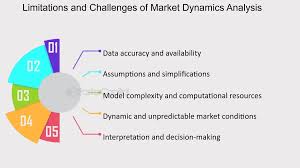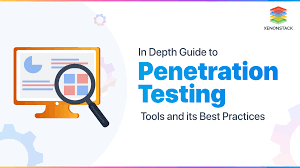
Understanding market trends is fundamental for businesses aiming for sustainable business growth. By analyzing trend analysis and utilizing market insights, companies can identify growth opportunities and adapt strategies to stay competitive. Failing to monitor industry trends can leave businesses vulnerable to changes in consumer behavior and competitive analysis outcomes.
Businesses that prioritize understanding market shifts are better positioned to create strategies that meet evolving demands, minimize risks, and capitalize on emerging opportunities.
What Are Market Trends?
Definition and Importance
Market trends are patterns or tendencies within a market that reveal shifts in consumer behavior, technological advancements, or economic factors. Recognizing these trends helps businesses anticipate changes and align their strategies to meet demands. For example, during the digital transformation era, businesses that adopted e-commerce early reaped significant benefits.
Monitoring market trends is not just about observation but about actionable insights. Businesses that analyze these trends can innovate their products and services, ensuring they remain relevant in dynamic markets.
The Role of Market Insights in Trend Analysis
Gathering market insights involves analyzing data on consumer behavior, sales trends, and competitor activities. These insights, coupled with predictive analytics, enable businesses to plan effectively and capitalize on emerging markets. Market insights allow companies to:
- Identify customer needs early.
- Understand competitive advantages.
- Align products and services with demand.
Steps to Analyze Market Trends
Research and Data Collection
Effective market research starts with collecting data from diverse sources, including surveys, social media, industry reports, and digital tools. Leveraging tools like Google Trends and SEMrush provides actionable insights into consumer preferences and industry patterns. Combining these with competitor benchmarking offers a complete picture of where your business stands.
Best Practices for Data Collection:
- Use online tools to gather real-time data.
- Analyze historical data for long-term trends.
- Monitor competitor performance to identify gaps.
Identifying Emerging Patterns
Emerging patterns reveal where industries and markets are heading. Recognizing these patterns involves:
- Analyzing shifts in consumer behavior.
- Identifying untapped growth opportunities.
- Tracking innovations in product offerings and marketing strategies.
Example: The rise of eco-friendly products is a trend driven by consumer demand for sustainable options.
Forecasting and Predictive Analytics
Using predictive analytics enables businesses to prepare for market fluctuations and seize market opportunities. Forecasting involves analyzing historical data and incorporating AI tools to predict future changes in demand, pricing, or consumer preferences.
Tools for Forecasting:
- Tableau: For visualizing data trends.
- Google Analytics: To analyze customer behavior.
- AI-based tools: For predictive modeling.
Aligning Market Trends with Business Growth Strategies
Developing Actionable Business Strategies
To transform market insights into tangible results, businesses must craft strategies that:
- Prioritize high-demand products or services.
- Invest in areas that show growth potential.
- Continuously evaluate and refine approaches.
Example: If market research shows increased demand for plant-based food, a restaurant can expand its menu to include vegan options.
Leveraging Emerging Market Opportunities
Identifying emerging markets involves analyzing data to uncover opportunities where consumer demand is growing. Use market segmentation to divide the audience into manageable groups, and measure performance against industry benchmarks to stay competitive.
Tools and Techniques for Market Trend Analysis
Top Tools for Market Research
Using the right tools ensures effective market research. Key tools include:
- Google Trends: For identifying search trends.
- SEMrush: For SEO and competitor insights.
- Tableau: For creating visual dashboards.
These tools help businesses conduct thorough trend analysis, offering a clearer understanding of customer needs and market shifts.
Role of Technology in Gauging Market Trends
Modern technologies like AI and machine learning revolutionize how businesses analyze trends. By providing real-time data insights, businesses can automate trend identification and make precise business decisions.
Benefits of Technology in Trend Analysis:
- Faster data processing.
- Improved accuracy of forecasts.
- Enhanced adaptability to market changes.
Challenges in Analyzing Market Trends

Overcoming Data Overload
With so much information available, businesses often struggle to identify actionable insights. Focusing on supply and demand dynamics and segmenting data by customer preferences can help simplify the process.
Adapting to Rapidly Changing Trends
Markets change quickly due to technology, economic shifts, or consumer behavior. Staying adaptable means:
- Using real-time data.
- Investing in agile strategies.
- Monitoring competitors continuously.
Conclusion
Gauging market trends is not just an analytical exercise but a roadmap to sustained business growth. Businesses that prioritize trend analysis can anticipate changes, mitigate risks, and identify growth opportunities ahead of their competitors. By leveraging tools like predictive analytics and real-time data insights, companies can align their strategies with market demands.
Adopting a step-by-step guide to trend analysis in business ensures a structured approach to innovation and adaptability. Whether it’s understanding consumer behavior, tracking emerging markets, or implementing AI-driven insights, staying informed about market trends is crucial. Companies that consistently analyze and act on trends position themselves as leaders in their industries, ensuring long-term success and relevance.
FAQs
What are market trends, and why are they important?
Market trends are patterns or tendencies that indicate market shifts. They are crucial for businesses to stay competitive and meet customer demands effectively.
How can predictive analytics help in gauging market trends?
Predictive analytics uses historical data and algorithms to forecast trends, enabling informed decision-making and strategic planning.
What tools can help track industry trends effectively?
Tools like Google Trends, SEMrush, and Tableau offer insights into industry trends, customer behavior, and competitor analysis.
How do market trends affect consumer behavior?
Market trends influence purchasing decisions by shaping consumer preferences and expectations, guiding businesses on how to adapt.
What is the role of AI in business trend analysis?
AI provides real-time data insights and enhances the accuracy of trend analysis through automation and advanced algorithms.






